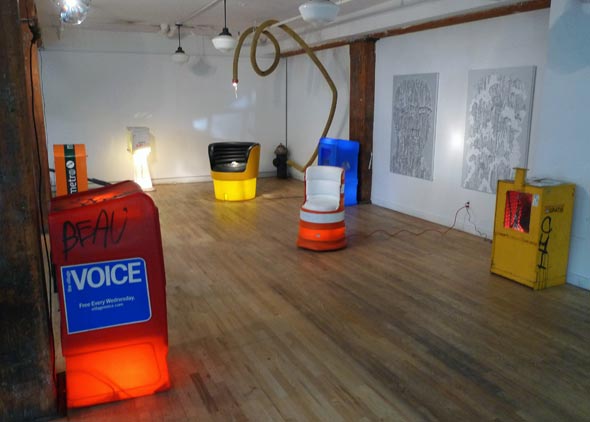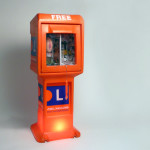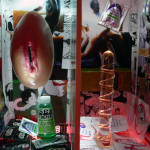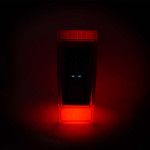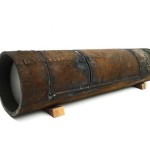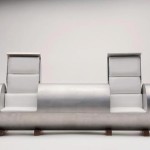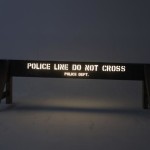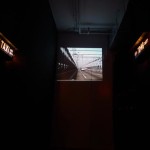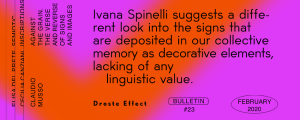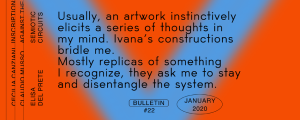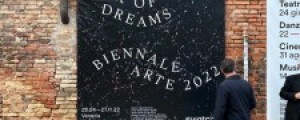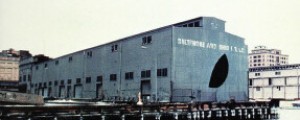Carlo Sampietro. Megalopolis
The continuous unveiling of identity is so often constructed by surroundings.
However these surroundings are simultaneously undergoing the same process,
defining and redefining their own spatially determined self, shedding classical brick
and concrete for utopian glass and steel.
New York, with its rapidly evolving population has long since been a canvas for
those seeking to identify the state, offering a multitude of difference to compliment.
This haste of change has cycled New York through and back adolescent curiosity
and mature ambiguity, erasing its constructions as soon as they are erected.
From its attraction of graffiti artists so fantastically glorified in the age defining Beat
Street, to the mobile museum established by MTA Arts & Design, to the tailored 7-
Eleven coffee ads insulting your sup, New York’s most receptive public artworks
reflect the exchange between megalopolis and city dweller, resulting in a unique
documentation of a sweetly strained relationship.
Carlo Sampietro a native to Italy, living in New York for the past seven years has
taken up the practice of revisiting New York’s former identities to invoke modern
day usefulness. Debuting in 2010 Sampietro’s The Street is in the House project
focuses on revamping objects of the megalopolis, exposing their dual nature by
transforming taxi headers to radios, underground piping to seating and free
newspaper bins into incubators of sorts for entertainment and personal devotions.
A majority of these works emit the same fluorescent lighting consistently following
us throughout the city, now as home décor.
Sampietro’s Taxi Tunnel turns taxi lights to both lamp and radio, recycling
timepieces from the 60’s and onward, extending beyond past and future in their
familiarity amongst city viewers.
The remnants of time that New York holds remains recognizable across generations and cities
as its traits develop but its innate character remains.
The metropolis’ tendency towards sociability gets lost between isolation and over
inclusion, a disparity Sampietro addresses in his works aiming to tie people together
by what already has, the city itself. His installation in conjunction with Figment,
Street Scraper, invites viewers to a round of mini golf, employing everyday street
obstacles as the course’s foundation.
Carlo Sampietro’s invitation to the public through objects of the public performs
interactive public art, as it should be, an open and slightly familiar interaction with
space for enlightenment.
Art’s tendency towards focusing on respectability from the
art public without regard to The Public is what has resulted in the censure of Serra’s
“wind breaker,” the white washing of Five Points. However when the two begin to
meld, when public interplay is considered in combination with art practice the artist
allows the space and viewer to reconcile.
Amanda Acosta: What is the most important element of public art?
Carlo Sampietro: This is its delivery as a clear message that can be read by everyone (art expert
and general public) without falling into a banal declaration.
AA: We’ve spoken of these different publics, how has creating public art
allowed you to address either or both? Do you feel pressure to appeal to one
more than the other?
CS: Impressively, art is able to reach a wide variety of audiences — from old to
young, from woman to man, from businessman to student. Art has a very relevant
impact and influence on our daily life and culture.
A good piece of public art should speak by itself, should be very well executed, and
have a strong idea relevant to the society that is being described with a sharp,
different angle. This allows my work to communicate and be reviewed by both
sectors.
AA: What do you hope people will take away from your interactive works?
CS: ART is a very distinct way of communicating. A sophisticated language, which
can be explicit or complex… It disturbs and challenges your worldview so that you
look at the world differently. I hope that people start to see, from a different angle,
the same daily life we live in.
AA: How much potential do you believe art has to bring a place as large and
often socially disjointed as New York City together?
CS: Art has the power of generating provocative thought and conversation, good
public art has the potential to bring people together. The problem in New York is
that most of these events are reserved to an elite class of artist and people. The cost
to produce these pieces by resident artists closer to the local reality becomes too
expensive. There are a lot of empty areas that can be dedicated to artists within each
different burrow, but the process to get the permits is too slow.
AA: Favorite piece(s) of public art?
CS: My favorite place for public art is Inhotim Center and Botanical Gardens in
Brasil. Each artist not only needs to think about their installation, but to greatly
consider the kind of building that contains it.
My favorite pieces are Matthew Barney’s De Lama Lâmina and The Gates by Christo
and Jeanne Claude.
Carlo Sampietro: The Street is in the House at Ca’ D’oro Gallery, New York, March 1-31st
- Emergency Table
- Sexi Sexi
- Sexi Sexi
- Space Cooler
- Cloche sofa Suge Pipe
- Cloche sofa Sewer Pipe
- Cloche Sofa Stainless Steel section
- Cloche sofa Stainless Steel
- Police Table Masterpiece
- PopDogs Figment NYC
- PopDogs Figment NYC
- Street Scraper Figment NYC
- Street Scraper Figment NYC
- Taxi Tunnel
by Ruth Green
in Focus on the American East
Apr 3, 2016






